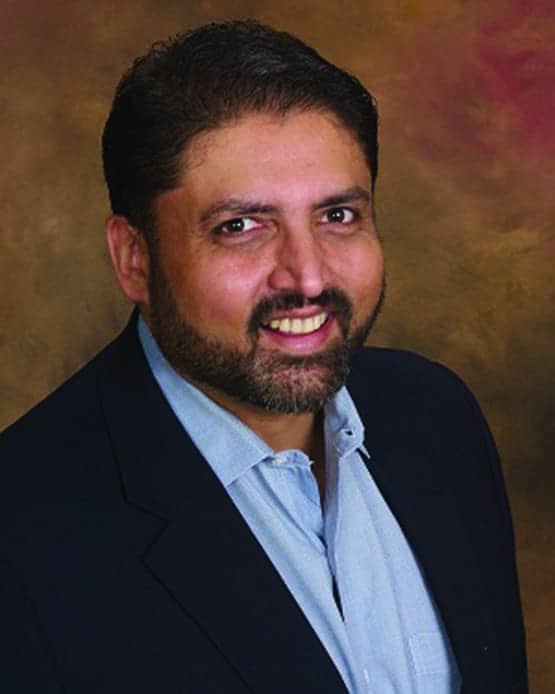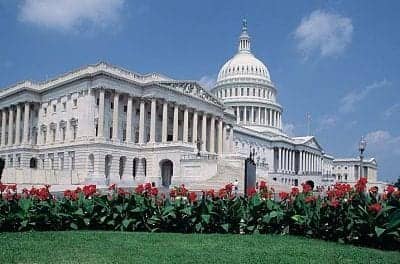Amyn M. Amlani, PhD, has been pondering the challenge of increasing hearing aid adoption rates for many years. In the October 2016 edition of The Hearing Review, he wrote an article with Holly Hosford-Dunn, PhD, examining historical rates and hypothesizing about the relative effects of price and demand.

The article asked, Is price a barrier to adoption rate? Based on the data presented 5 years ago, the answer was yes—but maybe not as much as you might think. Hearing Review caught up with Amlani, a former director of Professional Development and Education at Audigy, Vancouver, Wash, now an independent consultant, to get his take on the topic in 2021.
Hearing Review: Why have hearing aid adoption rates experienced an uptick since you wrote back in 2016, when the rate was 30.2%?
Amyn M. Amlani, PhD: It’s organic growth—basically people coming into the marketplace organically who are experiencing hearing loss. Hearing loss is one of those things that occurs over time, and we know that the market traditionally grows by about 3 to 4 percent annually. So, if you take that 30.2% in 2016 and multiply it times .03, you’ll get 2017’s number, and you multiply that again by .03 and you’ll get 2018’s number, etc. Eventually, you’ll end up with the number today, and you’ll probably end up with something on the order of about a half-million more people as a rough estimate.
HR: What’s the rough percentage of people with hearing loss?
Amlani: The percentage of people who have hearing loss in the United States is somewhere between one eighth and one tenth. It also depends on how you look at the US population. Do you include children or not? However, the one eighth to one tenth is a really good estimate.
HR: What is your sense of the influence of OTC products on adoption rates these days?
Amlani: We’ve always had these direct-to-consumer, non-regulated products on the market. And in 2015 and 2016, we were starting to see things like Bose start to develop new products—PSAPs or personal sound amplifying products. Price really wasn’t the conversation in the sense that we see it today. Today we’re actually seeing more conversations about price because of the cannibalism that’s going to take place in the future.
HR: What do you mean by cannibalism?
Amlani: If you think about when the OTC bill is passed—and the PSAPs that are available on the market today—some of these products can rival traditional hearing aids in some form or fashion. What you’re finding is that consumers are saying, “Wait a minute. Why would I spend $4000-$6000 on a pair of traditional devices when the technology is about the same and I can spend $600?” So the consumers become a lot more savvy about price. This will only become more of a factor as the OTC [regulations are developed] and the frameworks are released sometime this year…My hunch is that they’ll give us the framework here between February and March, with the intent of starting fresh in 2022.
Related article: OTC, Hearing Aids, and Cost as a Barrier to Purchase: An Interview with Amyn M. Amlani, PhD
HR: What is your opinion of federally subsidizing hearing aids at this point?
Amlani: I know it’s been debated ad nauseum. The idea is that this could potentially increase the adoption rate. If we look at this from an economic standpoint, having these traditional devices be subsidized by the government would certainly lend to an increase of a small magnitude for these devices. The problem that we run into is the devices work well, but the service aspect is what is suffering.
HR: What types of services?
Amlani: Patients need adjustments, counseling, guidance, and one-on-one help to use these devices, troubleshoot these devices, and maintain them. The subsidized model just is not going to allow for it in many ways because it’s cost prohibitive if you think about it. That’s one of the reasons I believe that the government was somewhat more willing to run with the direct-to-consumer model that we’re going to see in the marketplace, and then allow the market to bear fruit if you will from providing value in the services, or the service provision toward these devices.
HR: How can financing improve adoption rates?
Amlani: For people who are retired on fixed incomes—and many others for that matter—hearing aids are high-ticket items. Allowing hearing aid buyers to pay in smaller increments over time increases their ability to purchase and the demand for that product. If a TV set is $2,000 and I don’t have the capital to go out and purchase one tomorrow, I’m probably not going to buy it because I may not be able to pay the rent or put food on the table. However, if I can pay $100 or $150 a month through some financing, then I’m more likely to do it. It’s a win-win in terms of value.
For more information on hearing aid financing solutions for your patients, visit Ally Lending.
About the author: Greg Thompson is a freelance writer and a former editor of Physical Therapy Products and other publications. He is based in Loveland, Colo.





